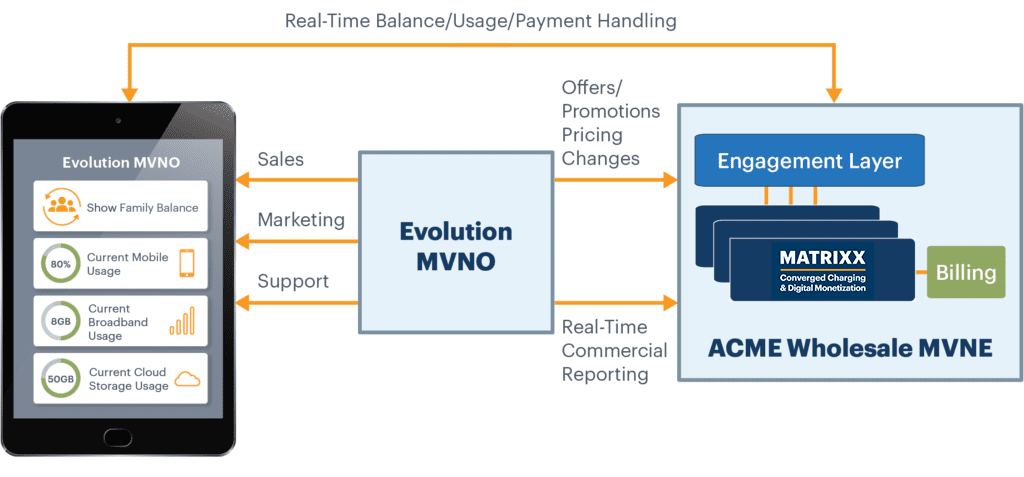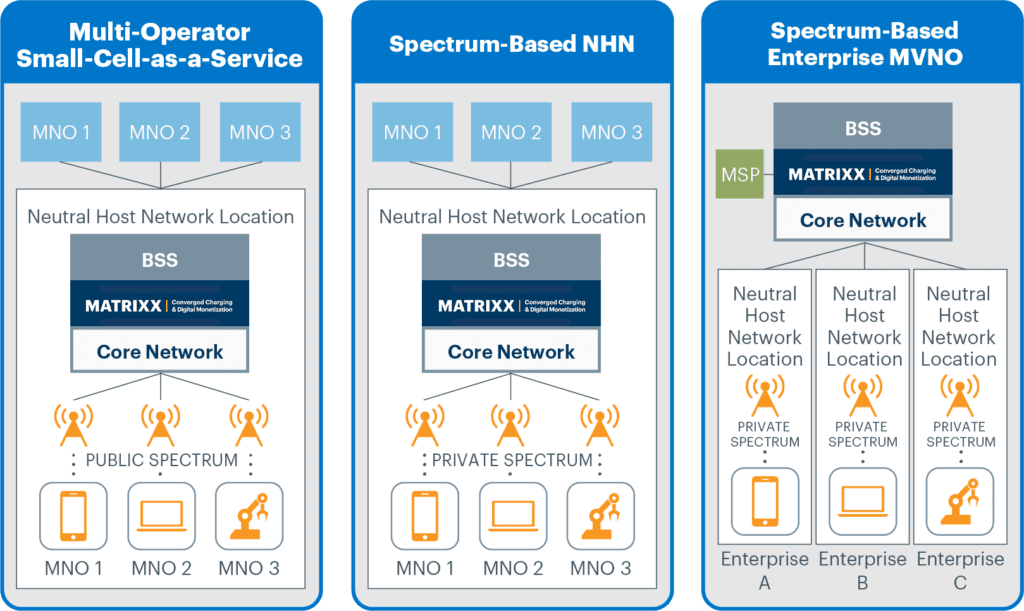- Product
Product
MATRIXX PlatformCommercial Benefits
Rapid Commercial InnovationCustomer-Centric SolutionsUnified, Real-Time RevenueDynamic Operational FlexibilityTechnical Benefits
High Performance Core5G CHF | CCS ArchitectureAPI-FirstClick-Not-CodeTrue Cloud NativeUnified Commerce- Opportunities
Market Segments
ConsumersSmall and Medium EnterpriseLarge EnterpriseGovernment NetworksPrivate Cellular NetworksWholesale- Customers
Overview
Success HighlightsBusiness Case Studies
DISH - Standalone 5GLiberty Latin America - Group TransformationOrange Romania - Rapid Brand InnovationTelefónica - Converged ChargingTPG Telecom - Multi-Brand StrategySuccess Stories
iD MobileOne NZ - ConsumerOne NZ - EnterpriseOrange PolandSwisscomTata CommunicationsTelstra- Partners
Be A Partner
Partner Program OverviewPartner Resources
Education & TrainingStrategic Initiatives
Blue Planet | Dynamic Monetization of 5GCelfocus | Digital BillingGoogle | Confidential ComputeIBM | Telco Cloud PartnershipMicrosoft and Blue Planet | Monetize 5G ExperiencesRed Hat OpenShift | Hybrid CloudSalesforce | Digital ExperiencesTallence | Charging TransformationPartner Case Studies
AWS CI/CD Pipeline- Resources
Events & Webinars
Webinars On-Demand- Company
A Change of Era in Wholesale
Paul GainhamExperiences never commoditize. By its very nature, an experience is personalized, tailored, configurable and adaptable for businesses and consumers alike. Add in rich information, and it’s clear to see why that is the case.
At the other end of the continuum, capacity and much of the telecom services portfolio space are rapidly commoditizing, making revenue and margin growth an increasingly challenging prospect for wholesale operators. Yet, with the rise of 5G, edge computing and private cellular networks, wholesale businesses are sitting on a rich seam of new, potential opportunities to attract retail partners. Approaching those new areas with the same portfolio-led business model is, however, the very definition of insanity.
Putting an enhanced digital engagement and commercial model front and center of the wholesale offer is a key way of turning the tide of commoditization and disintermediation. A modern monetization platform that provides a win-win-win for wholesalers, retailers and end customers alike by acknowledging the accelerated “shift to digital” in society and business and executing an experience-led portfolio strategy that amplifies the value of the portfolio through an experience-centric lens.
Otherwise known as monetization-as-a-service.
Monetization-as-a-Service
Monetization-as-a-service allows wholesalers to offer a rich, real-time commercial platform for retailers, adding inherent value to their offering and allowing them to focus on their key areas of expertise. By turning default, zero differentiated “revenue collection” commercial engagements into one predicated on dynamic revenue generation, wholesalers can turn the tide of commoditization and disintermediation.
Monetization-as-a-Service Concept: A revenue-generating service offering for retail partners predicated on the provisioning of real-time, agile, accurate and transparent commercial information that end-consumers and retail partners alike can make instantaneous, informed business or lifestyle decisions from.
Charging-as-a-Service
Revenue Collection- Event/activity rating
- Charge calculation
- Retail settlement
Monetization-as-a-Service
Revenue Generation- Event/activity rating
- Charge calculation
- Retail settlement
- Self-help, real-time digital channel feed
- Flexible monetization options (sessions, infrastructure, API, instantiation)
- Reduced billing footprint
By weaponizing the commercial model and providing retailers with key real-time commercial insights such as up to the second spend levels, portfolio volume utilization and flexible pay-now type models as examples, wholesalers are building on the strength of the portfolio by layering commercial differentiation as the key value add.
In doing so, it empowers retailers and their customers to act on accurate, up-to-the-second commercial information from which they can take informed business decisions, which could include retail cross-sell and up-sell offers delivered in a “just-in-time” manner or end customers seeing the need for earlier investment and upgrades of their retail offer.
Instantaneous business decisions powered by a commercial platform model that massively reduces time-to-serve through digital automation, reduces cost to serve through lean simplification of processes and reduces commercial risk through reducing time-to-revenue, avoiding bad debt risk and improving cashflow.
What’s not to like?
The following are examples of that model at work.
Integrated Consumer MVNO
In this integrated consumer MVNO model below, the fundamental brand ownership of the end customer (B2C or B2B) in terms of sales, marketing and support does not change. What does fundamentally change is the move from a passive, revenue collection model to one predicated on dynamic revenue generation. Deployment of MATRIXX as a multi-tenant monetization engine allows wholesalers to offer a more comprehensive monetization-as-a-service model, providing rich up to the second insights on spend levels, usage and payment approaches as well of course as offer/promotion and portfolio updates. That’s to BOTH the retail partner AND end customer.
Effectively, the wholesaler is providing a managed monetization platform.
Integrated Consumer MVNO Model

The digital app or marketplace infrastructure would likely be owned by the retail partner but fed key commercial updates by the wholesale platform, direct from MATRIXX.
All are offered, of course, at the direction of the retail partners but provided by the wholesaler as key value add capabilities of the wholesale platform.
In this scenario, billing doesn’t disappear, but its role changes to one of “lean-billing” where its primary function becomes invoicing, dunning and accounts receivable tracking as appropriate. All other real-time revenue generation activity is handled by MATRIXX.
An approach based on the principle of “charge what you can, bill what you must.”
Neutral Host Networks
A neutral host provides connectivity services on behalf of other players such as mobile network operators or industrial service companies as examples. Typically deployed in indoor environments such as offices, malls and stadiums where coverage challenges exist and it’s not commercially viable for multiple MNOs to deploy infrastructure. Private cellular networking spectrum has created much additional interest in this space.

Multi-Operator Small-Cell-as-a-Service: In the first scenario, the NHN deploys services via small cells but using the frequency bands of upstream mobile network operators. There may be an opportunity to increase the upsell from the NHN by providing seamless, integrated Wi-Fi coverage in particular locations as well, monetization of this model is mostly driven by the MNO plans in place.
Spectrum-Based NHN: Another key driver of interest in neutral host networks is the use of shared or private spectrum and the flexibility it gives those players. In this scenario, mobile network operator subscribers “roam” onto the private spectrum band in a location. The neutral host network owner can make full use of spectrum ranges, network slicing and balanced uplink management as examples as part of their business case as they now own the spectrum delivery and management. There is much more flexibility in the monetization options in this scenario, covering usage, quality of service, sessions and infrastructure usage as examples.
Spectrum-Based Enterprise MVNO: Building on the spectrum-based neutral host model, there is a growing opportunity for enterprise-specific services based on the use of private spectrum. These services would be directly retailed to the enterprises via an MVNO as an example and have the same flexibility in monetization models. There may also be an opportunity for capacity/service resale to upstream MNOs in this scenario. Wholesaling this type of service to an industrial services company such as Bosch, Siemens or Mitsubishi may also be an opportunity.
With developments in 5G, edge and private cellular networking, wholesale operators have a great opportunity to reignite their business model, to one founded on a monetization-as-a-service strategy. Attracting and sustaining retail players in the consumer, small-medium enterprise, large enterprise, public sector and, finally, industrial services markets with a highly differentiated, new commercial model is the opportunity scope.
This is not an era of change, but a change of era for wholesalers.
Read more on the Wholesale Solutions page.Pin It on Pinterest
- Opportunities
